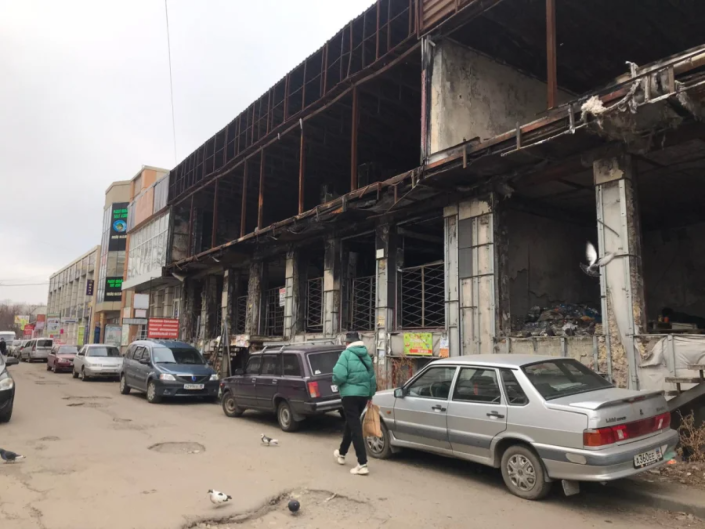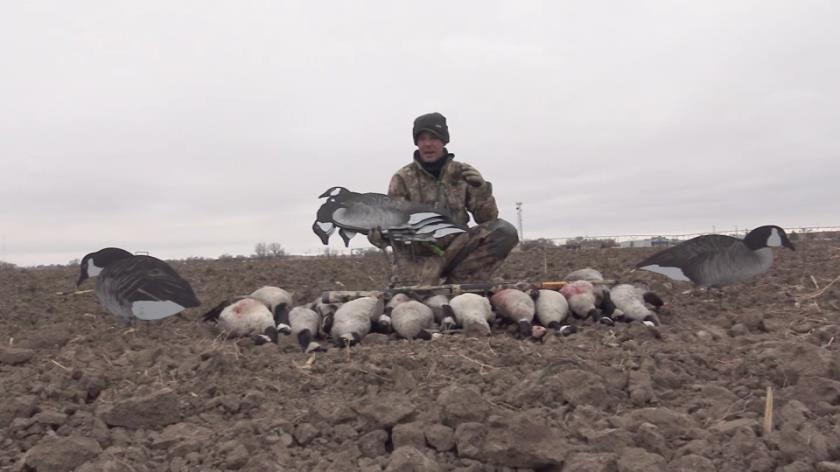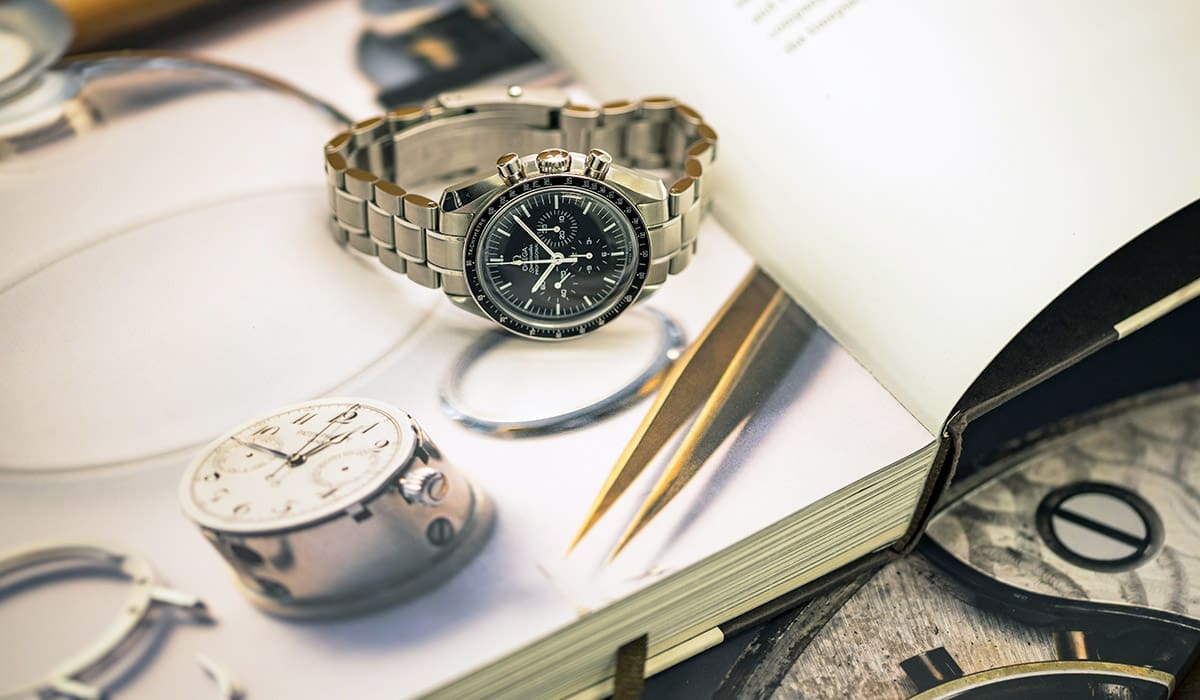
Two days later, on Feb. 24, the Russian army invaded Ukraine, calling the war a “special military operation.”
According to the Kremlin, the Russian army entered the territory of Ukraine to “liberate” it from the “Nazis” and “fascists” – just as pro-Russian forces “liberated” part of Donetsk and Luhansk oblasts in 2014, declaring the occupied territories so-called people’s republics. As a result, the LPR/DPR were switched to using Russian rubles as currency, local newspapers and TV channels broadcast pro-Russian propaganda, and citizens were granted “citizenship” in the puppet authorities en masse.
NV journalist Oleksandra Horchynska spoke with a 69-year-old woman who has lived in Luhansk all her life.
Two days before the full-scale invasion, the woman left the occupied territories.In an interview, she talks about the everyday life of occupied Luhansk, Russian propaganda, as well as the mood of the locals. She asked for anonymity for security reasons.
Here is her story.

Her departure from Luhansk
I left Luhansk on Feb. 22, 2022, before the beginning of the full-scale war. At that time, the checkpoint was still open in Stanytsia Luhanska – at first, I had to go through passport control by the so-called LPR, manual luggage inspection, later I had to walk one-and-a-half kilometers across the bridge over the Siversky Donets River.
In 2015, part of the bridge was blown up and people had to literally jump over to the other side. Signs indicating “Mines” still periodically appeared on the bridge, i.e. it has not been completely cleared of mines since 2014.
The Ukrainian section of the bridge was repaired in 2019: there are benches for resting, phone charging stations, and Red Cross medical centers. The section of the bridge on the side of the LPR is broken asphalt and posters that read: “If you’re tired of cooking Ukrainian borscht (traditional red-beet soup) – eat Russian cabbage soup!”
Read also: Resident of Starobilsk shares what is happening in occupied town
Thousands of people cross the bridge every day, many retirees, people with disabilities in wheelchairs. It is very difficult for them to go such a distance, especially with luggage. That’s why some men appeared on the bridge with posters: “I’ll take you to the other side for UAH 200.”
Apparently, demand gives rise to supply. The Ukrainian checkpoint is on the other side of the bridge, with a passport control and luggage scan, just like at an airport. You need a special pass from the SBU security service of Ukraine to enter and leave. It is ordered in advance.
About a thousand people crossed the Luhansk side every day toward Ukrainian-controlled territory, and they had various issues: obtaining a passport, receiving a pension, buying medicine, etc. But crossing the contact line is allowed only once a month. That’s why there was always a queue – from 100 to 200 people who wanted to go through this checkpoint. Snow, rain, heat, fainting – there is no other way, you have to wait in line.
About the mood in the LPR
In the winter, the mood in Luhansk before the full-scale invasion was as follows: people thought that no war would ever happen. Everyone was convinced that this simply could not take place. Just like now, it all does not fit in my head.
There was no such attitude among the local population such as “We need to fight,” “We need to beat these Banderites,” “Occupy their territories.”
Until mid-February 2022, there was no forced mobilization in the so-called “people’s militia of the LPR.” But on the last day of my stay there, when I was already leaving Luhansk, I saw two inspectors at the checkpoint who approached the guys at the bus stop and asked them to present identification documents. Later they took them “until the circumstances are clarified.” I’m not sure, but it seems to me that this was about these guys wanting to leave, and not fight.
Read also: Student who fled occupied Donbas, escaped forced mobilization, tells of life in sham republic
My neighbor has two sons and a nephew – they all sit quietly, almost hiding in their cellars. They are afraid to stick their noses out so that they are not forced to fight. Nobody wants to fight, especially when it is not clear for what and for whom. And when it is not clear how it will end.
Nobody mentions the so-called Novorossiya, which they wanted to “build” in the Donbas in 2014-2015. Yes, at first (pro-Russian ex-Ukrainian MP) Oleg Tsaryov conceived something there, he even headed some alleged parliament of Novorossiya, but then he disappeared somewhere, and since then no one has talked about it. We should not forget that about 80% of pensioners in the territories of the LPR receive Ukrainian pensions – what kind of Novorossiya? Who needs it?
There has been a “border” even between the DPR and the LPR all this time, all sorts of “customs crossings,” despite the fact that, according to the publicly declared beliefs
, they were supposed to become a single area. Yes, the DPR and LPR representatives had meetings, discussed something, signed some agreements, and still could not agree on a conclusion. I think this is not a very good sign.
A so-called “Museum of the Militia” was opened in the very center of Luhansk. The proxies put a defused bomb next to it. Of course, maybe they take children there on school trips, but in general, I have never seen anyone go in or out of there even once.
About city life
There was a curfew in Luhansk, from 2300 to 0400. Once I arrived, it was about 2315. I thought that it’s not big deal, I would get home quickly. A patrol stopped me, I was not allowed to go home, and although it was only five minutes away, I had to spend the night at the train station. They (proxies) shouted at women who break the curfew, ordering them to go and sit quietly. Men can be taken away “until circumstances are clarified.” I don’t know what happens to them later.
The Luhansk distillery “Luga-Nova” produces vodka with all its might, working in two shifts, and Russia is happy to buy these products. The local bakery is also working, and new shopping and entertainment malls with areas for children have been opened. In addition, the streets have lit up since 2014.
Read also: Local journalist talks about occupation and resistance in Kherson
At the same time, almost everything has been closed at other businesses. The machine-tool plant does not work, the same with the Luganskteplovoz locomotive building plant. There are goats grazing there, the enterprise is not operational.
When my daughter came to me in Luhansk, she was shocked that the traces of destruction had not disappeared after the hostilities in 2014 – no one is restoring these buildings. Department stores, shops that burned down after being hit by shells, still stand like that. Every third house on our street has been destroyed since 2014. The owner of one house was given a bag of cement as help, while another one got some bricks. They (proxies) said they couldn’t help.
Since then, these bricks have been lying under his house.
The groceries which Luhansk residents see on store shelves are mostly made in Russia or Belarus. There are some Ukrainian ones, but there are few of them and they are very expensive. For example, Ukrainian-made sanitary pads are sold at an incredibly high price. I don’t know how and who transports such goods to the LPR. We can pay in stores both in rubles and hryvnias. The exchange rate in Luhansk is RUB 2.50 per UAH 1.
Once, a “Wines of Crimea” store was opened in the very center of Luhansk. This is a good facility, they made repairs there, brought a lot of goods there. But people did not support the idea, and it closed in a few months. The prices were higher there than in ordinary supermarkets. Now there is a pharmacy instead of this store. The Belarusian cosmetics store is also not in great demand. No matter how hard they try, no matter what discounts they offer, their sales are low.
If we compare the prices of goods in stores and the salaries of locals, it becomes clear that the gap is very large.
Let’s imagine that a secretary’s salary is about RUB 6,000. And boots sold in stores cost RUB 12,000. Can a person with such a salary buy boots? Unlikely. By the way, shoes and clothes are also mostly Russian-made.
As for medicines, there are enough of them in the pharmacies. However, these medicines are also imported from Russia. Once I had to visit a traumatologist, and it turned out that he works in three hospitals at the same time. When the shift ends in one, he gets on his bike and pedals to the next. This is called “optimization.”
It’s possible to get a tomography scan only in one place, in hospital No. 7. It’s very expensive and the queue there is filled for three months in advance. In general, all services in hospitals are out-of-pocket. For example, a blood sugar test, a usual test strip, costs RUB 60. It’s probably possible to donate blood only by a doctor’s prescription.
Concert venues, theaters, a philharmonic society and a Ukrainian theater are open in the city. Of course, the troupe is small, but there are performances in Ukrainian. As for cinemas, for example, the Ukraina cinema was renamed the Rus cinema.
Public transport in Luhansk has switched mainly to small minibuses. Trams do not run as the transit authority was completely liquidated, people lost their jobs. The tracks turned out to be unsuitable for trams because it was used by tanks. There was a period when everything was shaking and trembling at 0400-0500. Tanks were driving through the central streets, they were deployed somewhere nearby. Now they have probably found another place for them, because they are no longer transported around the city.
The post office works only between the DPR and Russia, i.e. it’s impossible to send a parcel, postal order or letter to the Ukrainian-controlled territories.
I keep in touch with my friends who are still in Luhansk. They say it’s relatively quiet in the city, but they can hear cannons somewhere far away. In general, the city is quite empty. There is not much military equipment, it’s clear that they are driving somewhere, but, I would say, it is “limited.” But the military presence in the city is being felt.
About the “Russian world” and passports
When Russia began to talk about the recognition of the DPR and LPR, everyone began to understand that there would be something behind it. The policy of the”leadership of the LPR” was to convey to the people of Luhansk that we are “part of the Russian world” and will definitely become “part of Russia.” But in fact no one wanted to enter this “Russian world.” Although, the LPR has started issuing Russian passports under a fast-track procedure, not many people have taken advantage of this opportunity.
The Russians probably thought that millions of people would run to obtain a Russian passport, but no.
In fact, according to data published by local “authorities,” “almost 800,000 people” from all (non-government-controlled) territories in Luhansk and Donetsk oblasts obtained Russian passports.
Basically, these passports are wanted only by those who need to register a business or purchase real estate. Or young people who receive their first document at the age of 14. Students also have to choose which passport to have in order to understand where to study and work. Many people expect that children who enter the local universities will later receive Russian diplomas, so they are not particularly worried. At least that’s how it used to be. As for now, when Russia is under sanctions, I don’t know.
Most residents of the so-called republic have Ukrainian passports. They are not taken away when applying for citizenship of the LPR. Therefore, many have both, or sometimes three, including the Russian one. For example, I have two neighbors. One of them is quiet and calm, she’s taking the position “don’t touch me and I agree on everything,” while another one stands for “killing all these bastards Banderites.” Neither of them obtained the LPR passport. Even the one who allegedly supports the “LPR government” said that she did not need this passport.
Documents issued in the LPR should be reissued so that they have legal force in the territories controlled by Ukraine. For example, I had to reissue my sister’s death certificate. This should be done in court, but the procedure has already been established, there is a certain algorithm.
About the information vacuum and local order
In 2014, there was no electricity (in the occupied territories). Later, when everything was working again, the Luhansk and Zvezda television channels
began broadcasting. After that, there were more and more such TV channels, and we were finally connected to a package of 18 TV channels, all Russian ones. (Russian propagandists Olga) Skabeeva, (Vladimir) Solovyov, (Artyom) Sheinin – everything is to its full extent, as they say.
The same goes for newspapers: nothing was published in 2014, except for the newspaper of the 21st century. This is a postcard where everything was about “we are for Russia,” “cheers for Russia,” etc. Later, the format of this newspaper became larger. Previously, we had another newspaper, Zhyttia Luhanska (Life of Luhansk), which was very popular before 2014. And the Respublika newspaper also appeared, it was distributed free of charge, for example, in stores. I don’t know who read it, people took this newspaper to wrap their garbage in it, as they say.
There had been no Internet for some time, but when it was reconnected, all Ukrainian resources were blocked. Totally. I couldn’t even watch any cooking programs.
In this regard, there is little alternative information in the LPR. People mostly “bring” information after leaving for Ukrainian-controlled territories. And yes, there is very little Ukrainian, and a dime a thousand of Russian. Everywhere they cry that we are “part of the Russian world,” that “Donbas is Russia,” etc.In 2014, there was an influx of Russian pop stars both in Donetsk and Luhansk: Lolita, Vlad Topalov, Stas Kostyushkin, Alexei Vorobyov, Oleg Gazmanov. Many others performed in the central squares, everything around thundered, these concerts were broadcast on TV. They all shouted “Well done, we love and support you because you spoke out against it,” but it’s not clear against what. It also affected people’s minds.
There’s no such thing now. For example, Gazmanov announced his next concert in Luhansk on Feb. 14, 2022. Gazmanov’s “faces”, on posters the size of a five-story house, were everywhere. But later he didn’t come, he canceled everything. Apparently, he knew something.
Does the LPR control personal correspondence and conversations? I don’t think so. They don’t stop people on the streets, they don’t take away mobile phones. As for wiretapping phone talks, I don’t think they have the opportunity to listen into everyone on such a scale. At the same time, for example, we have checkpoints and tank units in the very center of Luhansk. Mobile communication is jammed there. One of the tank units is located near the kindergarten, opposite the city administration. Of course, they have disguised it. The house arch was covered with cinder block, surrounded by concrete, and all this is guarded by the military around the clock.
About local politicians
When they (proxies) organized the so-called referendum for the LPR in Luhansk, they said that those who come to vote could get a special card for a 50% discount at the LPR store. In addition, all those who had voted got RUB 100 on their mobile account, of course, not Ukrainian mobile numbers, but Russian, or on a local mobile operator called Lugak. People were standing in line thinking: okay, to hell with that election, I’ll get at least a card to buy cheaper products.
I didn’t go to this referendum. But my sister did, who supported the pro-Russian line. She took this card and the next day she knew that it was not working. Did it affect my sister’s opinion of what was happening? Well, she said that “they can’t do everything at once, it’s hard for them.”
The new “head of the republic,” Leonid Pasechnik, does not report on his activities to the people, there is no publicity, except for a small note in the newspaper, and that’s it. Compared to him, the former head of the LPR, Igor Plotnytsky, seemed almost like a god, as he organized live broadcasts of all meetings at which any decisions were made.
Read also: Soviet identity is gone forever, but Putin doesn’t get it
Local commanders in Luhansk are awarded medals and orders: “for bravery,” “for services to the republic,” etc. They all wear medals, but until a certain time. For example, recently there was information that Russia’s FSB security service had allegedly arrested the so-called interior minister of the LPR, Igor Kornet, and he was put behind bars somewhere in Russia. And this Kornet liked to wear all his orders and medals.
We also had “Minister of Education,” Lesya Lapteva. She took her salary for three months, as well as the money allocated for the repair of schools and kindergartens, and went to Thailand, and she’s still having a great vacation there.
Another one, “Health Minister” Larisa Ayrapetyan, worked for about six months. It turned out that she had looted humanitarian aid brought to LPR by various public figures. She stored some of the medicines, which were especially valuable, in the local morgue in the basement of the medical school. She gradually distributed it to pharmacies and sold it. She disappeared quietly, no one knows where – like many other people, who probably were disliked by someone.
In general, there is now a practice in Luhansk reality when people disappear. For example, there was a case when two local deputies went to visit their mother in the village of Kamianiy Brid. We have such an area. And they disappeared. People searched for them for some time and then stopped. Three more (people) were killed, and after a while they were made “heroes of the LPR,” it turned out that they were not guilty of anything.





More Stories
5 Tips For Launching a Blog to Highlight a Brand
Promotions – a holiday gift for shopper and retailer
10 Makeup Items I Reach For Everyday & Would Never Be Without – The Anna Edit